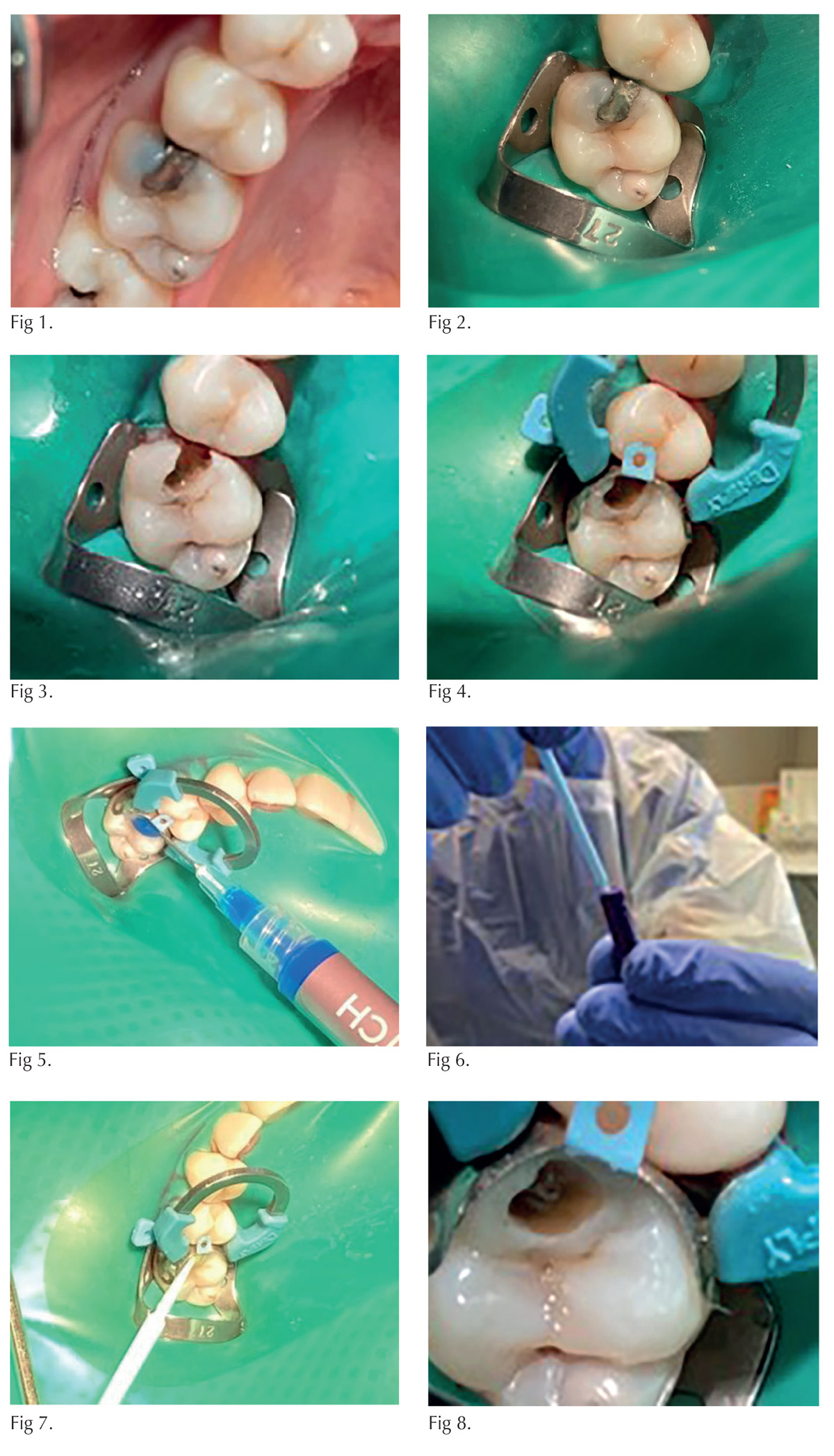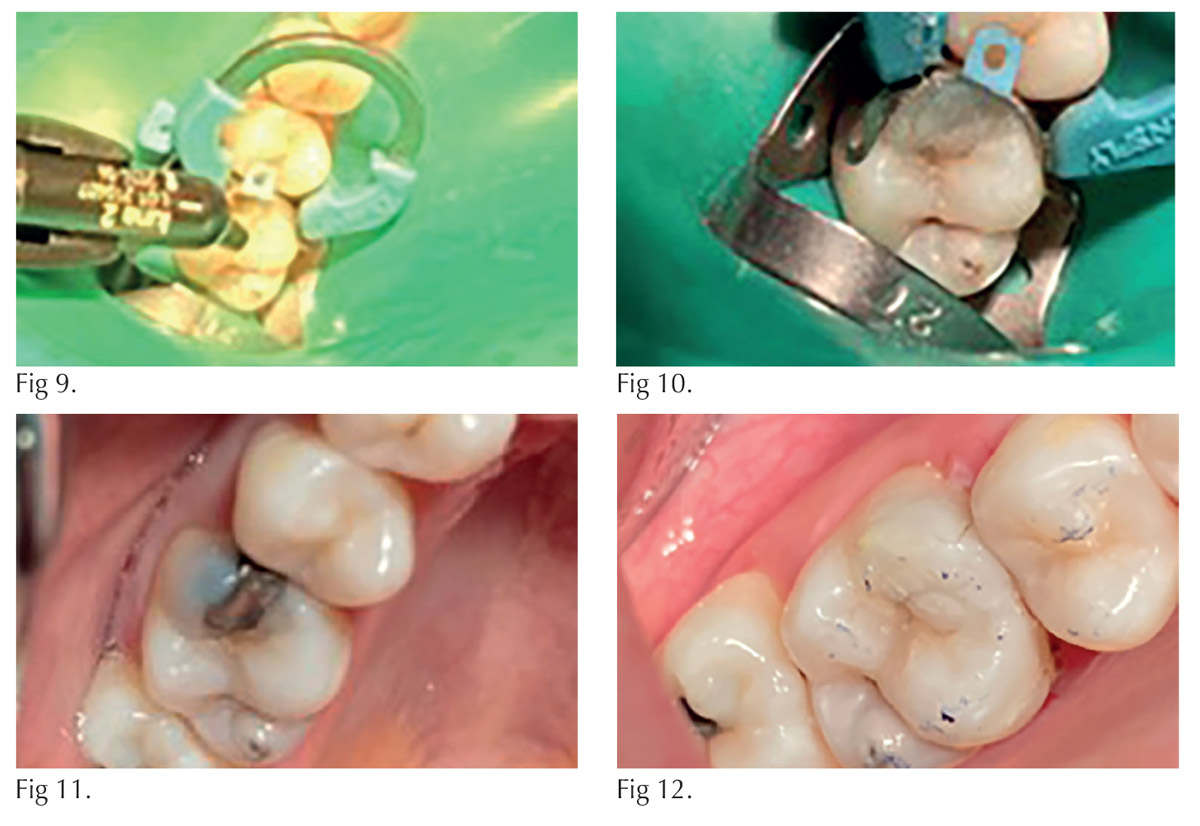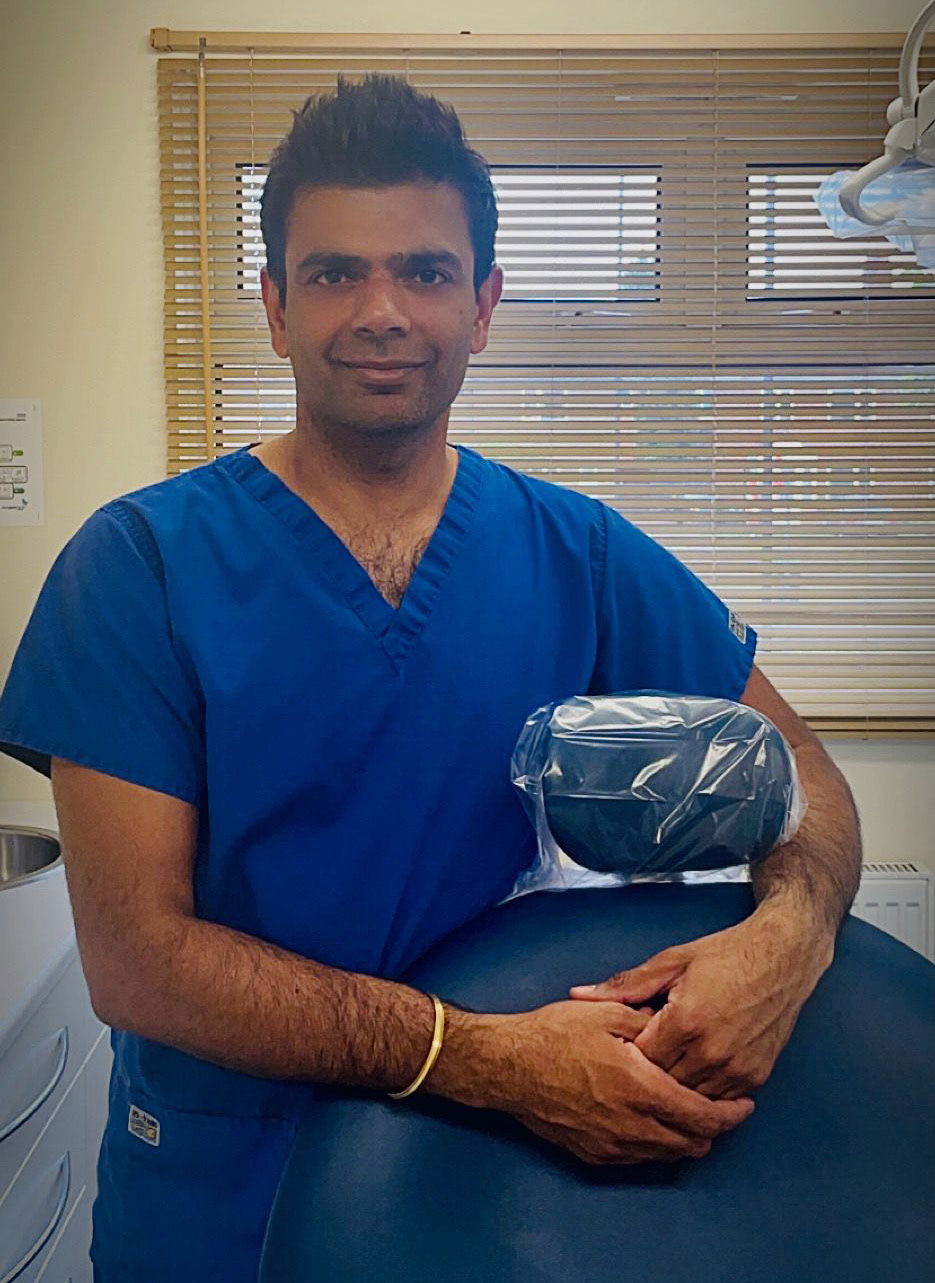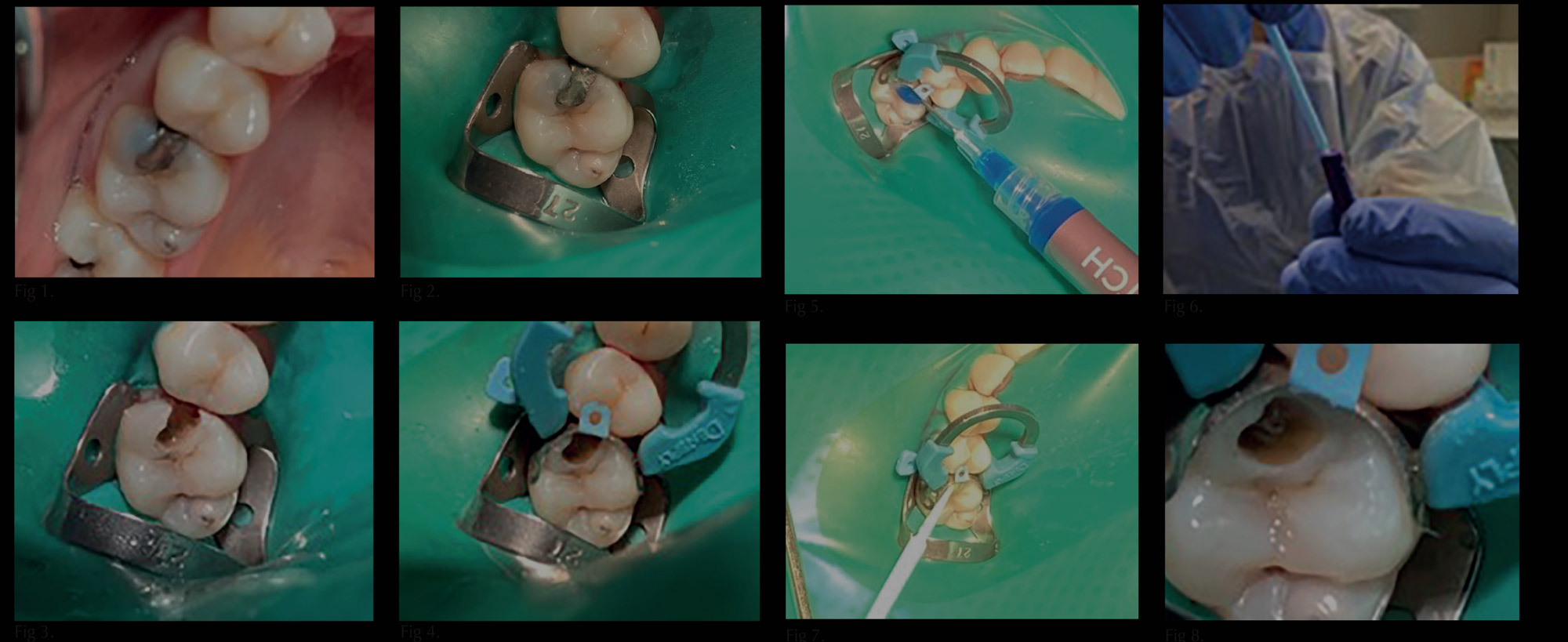Jatinder Heer presents a recent case study.
This case study relates to the restoration of a maxillary first molar. A direct composite material (Luna 2) was used as a simple direct method enabling a good degree of polish, excellent aesthetics and strength.
Summary
A female patient attended for aesthetic options to restore her maxillary first molar. She sought an aesthetic improvement as the pre-existing amalgam restoration was the cause of a grey hue through the buccal enamel wall. There were no symptoms, and the option of a direct robust restorative method was the optimal option to preserve as much tooth tissue as possible.
Clinical stages
For this case the restorative material needed to be easy to use, durable and provide exceptional bond strength. A standard restorative tray set-up was used and Super Etch, Zipbond and Luna 2 chosen as ideal restorative materials for application. Rubber dam and high volume aspiration was also used to improve isolation and minimise patient exposure to mercury. The shade was taken in natural light and prior to any isolation.
Figures 1 and 2 demonstrate the enamel discolouration related to the amalgam restoration. The patient sought treatment to improve the aesthetics. Local anaesthetic was administered and the tooth isolated.
A minimally invasive technique was employed to remove the pre-existing amalgam restoration. A sectional matrix system was then secured, and a wedge used to ensure correct adaptation at the base of the cavity (figures 3 and 4). A 15-second etch technique was employed. The etch was washed for 30 seconds and gently air dried to avoid desiccation before applying Zipbond (figures 5-7).
Zipbond resin was applied and gently air dried before light curing. Luna 2 composite was then applied to the cavity in increments to replace the deficient enamel and dentine. A single shade technique was employed.
Care was taken to avoid air pockets. Luna2 composite was then applied and light cured. A single shade method was found to be sufficient. The correct tooth form was re-created and contacts polished with approximal finishing strips. The occlusion was checked and the composite polished (figures 8-10). Initially, the composite was placed, and the contact point re-established. Luna 2 was used for the entire restoration.
The final result
This case represents management of a simple everyday restoration where an aesthetic treatment is sought. Luna 2 composite was an ideal restorative material as it is durable and highly aesthetic. A single shade system was also applicable. The buccal wall no longer had the greyness which was causing an aesthetic problem for this patient in her smile line.



Dr Jatinder Heer
BDS Lond, MFGDP(UK)
Dr Jati Heer has been working as a general practitioner for twenty-five years, with a career that’s also spanned hospital environments. After setting up the JH Dental Clinic in 2001 he’s been involved in both general dentistry and acts as a referral centre for more complex cases. Dr Heer is an advocate for advancements in dentistry that are backed up by robust clinical research.





